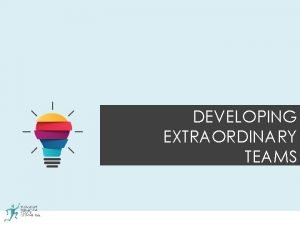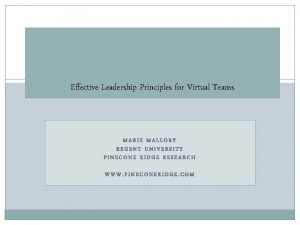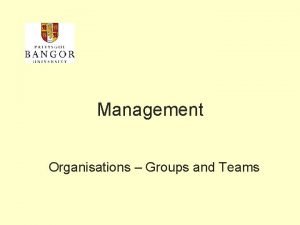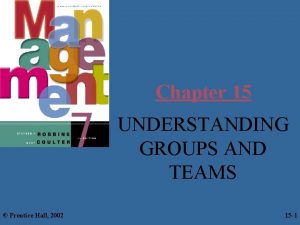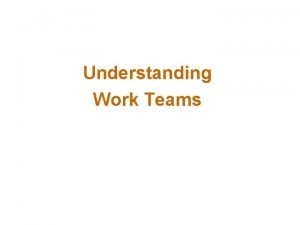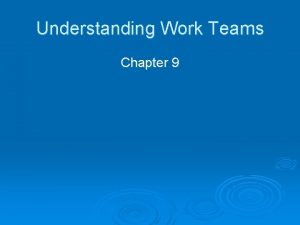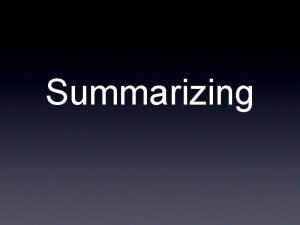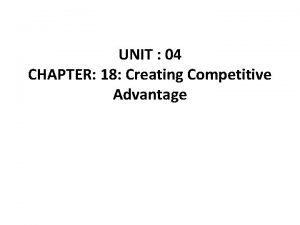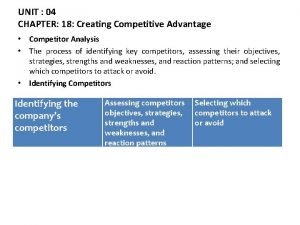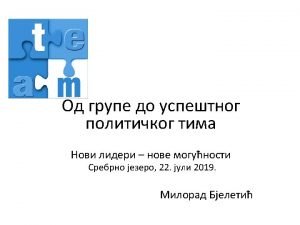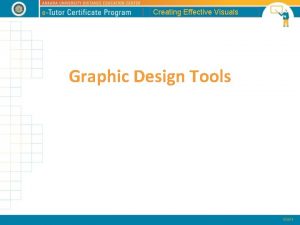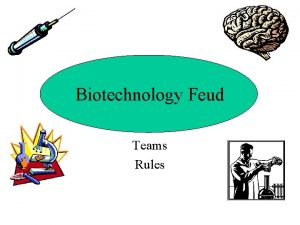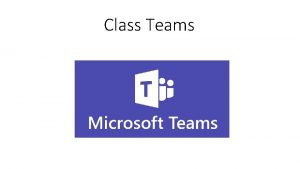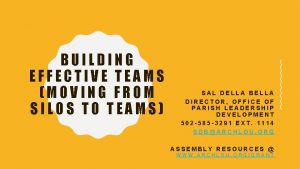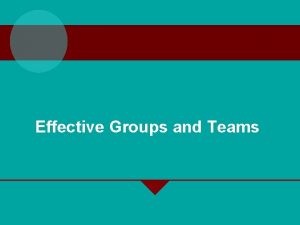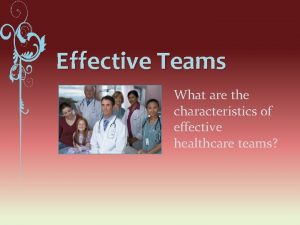CREATING EFFECTIVE TEAMS 1 WHY ARE TEAMS SO













- Slides: 13

CREATING EFFECTIVE TEAMS 1

WHY ARE TEAMS SO POPULAR? Outperform individuals Increased use of employee talents Flexible and responsive Increased job satisfaction Better employee involvement and participation 2

TEAMS Collective performance Positive Individual and mutual Complementary VS. GROUPS Goal Synergy Accountability Skills Share information Neutral Individual Random and varied 3

TYPES OF WORK TEAMS Problem-Solving Teams Groups of 5 to 12 employees from the same department who meet for a few hours each week to discuss ways of improving quality, efficiency, and the work environment. Self –Managed Teams Groups of 10 to 15 people who take on responsibilities of their former supervisors. Cross-Functional Teams Employees from about the same hierarchical level, but from different work areas, who come together to accomplish a task. Virtual Teams that use computer technology to tie together physically dispersed members in order to achieve a common goal. 4

KEY COMPONENTS OF EFFECTIVE TEAMS Context Composition Work Design Process Variables 5

CREATING EFFECTIVE TEAMS: CONTEXT Adequate Need Resources the tools to complete the job Effective Leadership and Structure Agreeing to the specifics of work and how the team fits together to integrate individual skills Climate of Trust Members must trust each other and the leader Performance and Rewards Systems that Reflect Team Contributions Cannot just be based on individual effort 6

CREATING EFFECTIVE TEAMS: COMPOSITION Abilities of Members Need technical expertise, problem-solving, decisionmaking, and good interpersonal skills Personality of Members Conscientiousness, Openness to Experience, and Agreeableness all relate to team performance Allocating Roles and Diversity Many necessary roles that must be filled Size of Team Flexibility 7

CREATING EFFECTIVE TEAMS: WORK DESIGN Freedom and Autonomy Ability to work independently Skill Variety Ability to use different skills and talents Task Identity Ability to complete a whole and identifiable task or product Task Significance Working on a task or project that has a substantial impact on others 8

CREATING EFFECTIVE TEAMS: PROCESS Commitment to a Common Purpose Create a common purpose that provides direction Have reflexivity: willing to adjust plan if necessary Establishment of Specific Team Goals Must be specific, measurable, realistic and challenging Team Efficacy Team believes in its ability to succeed Mental Models Have an accurate and common mental map of how the work gets done A Managed Level of Conflict Task conflicts are helpful; interpersonal conflicts are not Minimized Social Loafing Team team holds itself accountable both individually and as a 9

TURNING INDIVIDUALS INTO TEAM PLAYERS Selection - Make team skills one of the interpersonal skills in the hiring process Training - Individualistic people can learn Rewards - Rework the reward system to encourage cooperative efforts rather than competitive (individual) ones Continue to recognize individual contributions while still emphasizing the importance of teamwork 10

TEAMS AREN’T ALWAYS THE ANSWER Increased communication demands Conflicts to be managed More time and resources required Three tests to see if a team fits the situation: 1. Is the work complex and is there a need for different perspectives: will it be better with the insights of more than one person? 2. Does the work create a common purpose or set of goals for the group that is larger than the aggregate of the goals for individuals? 3. Are members of the group involved in interdependent tasks? 11

COMMUNICATION THE TRANSFERENCE AND UNDERSTANDING OF MEANING Functions of Communication Control member behaviour Motivate employees Express emotions Provide information PROCESS OF COMMUNICATION The steps between a source and a receiver that result in the transference and understanding of meaning. SOURCE CHANNEL RECEIVER (Encoding) (Decoding) FEEDBACK 12

BARRIERS TO EFFECTIVE COMMUNICATION Filtering A sender’s manipulation of information so that it will be seen more favourably by the receiver Selective Perception A receiver selectively sees and hears based on his/her needs, motivations, experience, background, and other personal characteristics Information Overload A condition in which information overflow exceeds an individual’s processing capacity Emotions Language Different languages due to age, education and culture, use of jargons, etc. Communication Apprehension Undue tension and anxiety about oral communication, written communication or both 13
 Antigentest åre
Antigentest åre Why why why why
Why why why why Personal growth definition
Personal growth definition Principles of effective leadership in virtual teams
Principles of effective leadership in virtual teams Characteristics of effective teams
Characteristics of effective teams Characteristics of effective teams
Characteristics of effective teams Don't ask why why why
Don't ask why why why Why have teams become so popular
Why have teams become so popular Understanding teams
Understanding teams Why is this an effective beginning?
Why is this an effective beginning? Why is summarizing important in reading
Why is summarizing important in reading The elohim creating adam
The elohim creating adam Chapter 18 creating competitive advantage
Chapter 18 creating competitive advantage Chapter 18 creating competitive advantage
Chapter 18 creating competitive advantage


